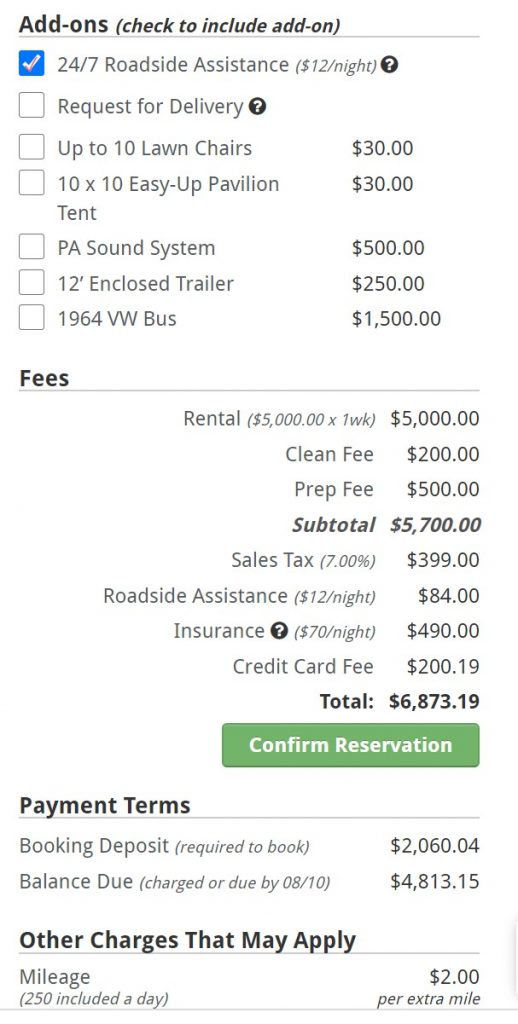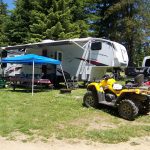How To Rent An RV Like A Pro
Here’s Our Tips For How To Rent An RV
You’ve been cooped up way too long. The spouse and children are eager to get out of the house. Why not the Great American Vacation? The ultimate road trip? Or make it an awesome upscale camping trip?
So, maybe you’re an expert camper but you’ve never rented an RV before – So here are some tips and considerations to help you have an even better trip. Maybe you’ll even save some money in the process.
You’re smart. You prefer to rent an RV from an owner through a reputable RV rental marketplace rather than own one and have it sit in your yard for 9-10 months out of the year. You’ve opted to rent an RV by owner. Afterall, one of the most enjoyable ways to see the country is in an RV and you’ll be on your own schedule making it must more stress-free.
Here are our top tips:
- Understand the Types of RVs
- Find The One That Fits Your Needs And Budget
- Select A Reputable Company To Rent An RV Through
- Weigh All Of The Costs and Beware Of Tacked On Fees
- Book 3 – 6 Months In Advance
- Choose Your Destination Wisely
- Plan Your Route
- Use A Packing List
- Practice Backing Up
- Get Familiar With Emptying Waste Tanks
- Get The Roadside Assistance
But, before you start searching online to find the nearest RV rental by owner location, read through this article for renting the king of all road vehicles. If you’re new to RVing, you definitely want to read this before you hit the road, there are things an expert will need to consider:
The 1st Question is How Many People are joining this Road Trip?
Knowing how many people are going will determine the type of RV to rent. Also, do you have the ability to tow a camper, trailer or 5th wheel?
Naturally, you’ll take all of your children, even the brooding teens with their noses down in the cellphone. Then are their any extended family or pets to consider?

What Type of RV Will Be Best For Your Trip?
- Class C Cabover – This RV has a van cab with an attached motorhome. Class C RVs typically have a bedroom, bathroom, and kitchen that can be converted into sleeping quarters. The Class C is the compromise between the Class A and the Class B. They are built with a cabin chassis and are easy to spot by their overcab sleeping area. The location of the sleeping area allows for more room in the living area, which is not quite as big as other classes of RVs, however, the Class C Cabover can comfortably accommodate four to eight people and is fairly easy to manage.
- Class B RV, also known as a camping conversion van, includes a raised roof and dropped floor to provide additional headroom. Class Bs are super easy to maneuver due to their resemblance of your average family minivan. These RVs are small, streamlined and ready to roll. Nimble and more fuel efficient than Class C motorhomes, Class B motorhomes offer living space best suited for small groups of two to three. Even though there is a kitchen, living room, and a bathroom, it is very small. Also, note ladies that the toilet and shower are combined into one space.
- Class A Motorhome – This type is the largest of the motorhome family. With this, you will traveling and camping in luxury. With more room than other RVs, you can easily live in this motorhome. But keep in mind that with its more luxurious and roomy accommodations comes a bigger rig that is more difficult to drive.
- Fifth Wheel Camper – This pull-behind RV requires a fifth wheel hitch that is mounted in the bed of your truck. Fifth wheel campers have two full-sized beds and bunks, and also offer a kitchen, bathroom, and dinette.
- Towable Travel Trailer – You also can rent an RV that you tow behind your truck, as opposed to drive. These trailers have kitchens, bathrooms, and sleeping areas typically fit for four or five people. You may know them by their more common name of Toy Hauler – Toy Haulers are identified as trailers or motorhomes that carry “toys”, such as ATVs, motorbikes, and other large outdoor vehicles. Any RV that has the wide-open, large, “Garage” area in the rear with a ramp qualifies as a Toy Hauler. The advantage of having a large space is that it can be converted into a patio, office, or extra storage space. When you’re camping in the desert or in a rainy area, having a patio off of the ground can be very convenient. Some Toy Haulers offer fold-away sleeping options, a separate TV and entertainment center within the garage. Ranging in length between 21 and 40 feet, a toy hauler can sleep up to 11 passengers. These are meant for trips where you are carrying large items such as going to the dunes to ride dirt bikes and ATVs or to a motorbike event. Toy Haulers are very popular with motorcycle owners who attend bike rally’s, because they can haul their bikes to a campsite near the rally and have a place to stay while there.
When renting a Toy Hauler, you’ll want to make sure you have a truck with the appropriate towing package. You can also find a toy hauler that can be delivered to your camping space. This way, you don’t have to deal with towing it, while also having a space to store your “Toys.” - Pop Up Camper Trailer – Pop-Up Campers are small travel trailers that are towed and can be collapsed for easy storage and transport. A pop-up camper is the easiest to tow for any vehicle with a hitch and the most versatile to fit into any campsite. This type of camper includes a small kitchen but does not include a bathroom. You’ll want to choose a campsite that offers restrooms and showers. Most pop-up campers range between 8 to 16 feet and have enough room to sleep 4 comfortably. Once at the campsite, these campers allow for the flexibility to unhitch. Pop-up campers are perfect for long weekends camping at National or State Parks. A pop-up camper is an affordable and fun option that keeps you close to nature while not having to sleep on the ground.
Before Selecting The Class A, Consider This.
With great size comes great responsibility and more challenges. Class A RVs that are 25 feet or longer may not fit in typical camp sites. So, when you’re selecting your Class A, you’ll want to take that into consideration.
You’ll also want to make sure you’re comfortable backing in the RV into a camp site. If you aren’t; find a camp site that has pull through spaces.
Special Driver License
Every state is different. Go Downsize has a list of license requirements by state that will help you understand what is required for each state.
Figure Out The Per Night Cost For The RV Rental By Owner
Now that you know how many people are going on the trip and which RV will be best for your needs, now you can start shopping.
Since some websites are a Peer to Peer, meaning the RV renter rents directly from an RV owner through an online RV Rental Marketplace, the per night costs can vary from $80 – even $800 per night. There is also the point of mileage.
Many Hosts will charge a per mile fee, much like a car rental. Some of these hosts aren’t too cozy with the idea of renting their RV for a cross country trip, so keep that in mind.
On most sites, all of the costs involved will show on the reservation screen before you send an inquiry. Like this one in the image.

Some websites will have hidden charges, surprise fees that can raise the actual rental price by 30% to 40%, and your in shock to know what you’re spending, after you thought you were seeing the total rental bill. Keep in mind that these
are individual hosts and they charge what they decide to charge independent of the website they are listed on. So shop around on the website to get a good idea of what an RV Rental will cost.
And then there is the deposit. If you send an inquiry to a host through an Online RV Rental Marketplace such as RVnGO, once that inquiry is accepted by the host, you will then pay a deposit to secure your RV Rental. Just like ya would do with a Hotel room.
Don’t get Fooled By Cheap RV Rental Insurance
Is that website providing damage protection? How much protection can you obtain for your trip? Will it be enough? Will you even know, based on what is shown on the website?
Be sure to get the most damage protection available. Of course you will get the 24/7 Roadside Assistance but what about the liability or and property and casualty damage coverage? Many sites only use the state’s bare minimum.
Nobody wants to consider a protection plan or think they need it until after the fact of an incident. So just do your homework and make sure you’re getting the right amount of damage protection for your trip.
RVnGO is NOT an insurance company. The protection plan for RV units during the rental period is offered through Crum & Forster.
Now, What About The Weight? How Much Weight Can The RV Take?
You may not think this is a big deal, but it actually is – especially if you’re in an accident. NOT that, that would happen to you. This example applies to Class As only as there are different considerations if you are in a travel trailer or Fifth Wheel. But, regardless of the type of RV, you don’t want to risk traveling in an overloaded vehicle.
There are 2 stickers you want to keep an eye out for – the first is the weight sticker. This details all the important weight ratings and maximums. The second sticker is the tire capacities sticker. This is usually found inside the door frame, near the engine compartment or on the inside of the service door.
Everything About RVing has done the homework on all this in his Trailer and RV Weight Demystified article. Check out his recommendations before you hit the road. The host that you’re renting from should also be able to guide you here – take advantage of their knowledge. They want you to be safe and compliant too.
Word of warning: If you’re involved in an accident, expect a weigh-in to be performed. An overweight vehicle may void any damage protection claims and you could be found liable. Don’t take chances with this.
Now That Ya Rented The RV, Here Is Some Set Up Advice.
Looking for The Hook Ups?
When renting an RV, the Host will review a checklist with you prior to your trip. 
The Host will provide training on how to hook up and breakdown the RV. Gone with the Wynns have a list of connectors and cords you’ll want to make sure are being provided.
Just a few tips beyond the mechanics of Hook Ups:
Carry a box of disposable rubber gloves for use during sewer hookups and the dump station.
If an extension cord is needed for your electric hookups (really any type of hookup for that matter), use the shortest length available. The longer the distance, the greater the voltage drop will be.
The hookups will bring a high level of comfort regardless of your destination. These hookups provide the comfort of home while you’re on the road.
Check out this video from our friend’s – The RV Geeks from The RVers
Let’s Get On The Level Here.
Of course, you know that your RV must be level for the refrigerator to work properly – right? And if you want the water to drain properly, leveling is a must.
Newer models will have hydraulic leveling or computerized level, so that’s a much easier task. Just turn the key, follow the lights and voila. Again, our friends at RVGeeks put together this simple to follow process on manually leveling your Class A Video.
Most campgrounds are pretty level but this should help if it’s slightly off. If you have rented a travel trailer or camper, Camp Addict has put together this simple to follow post
Before Ya Leave, Here Are Some Final Things To Remember.
• Check tire pressure before any big trip. When you rent an RV, all of this will be either done for you or laid out for you.
• Use a spotter when parking (often other RVers at the campsite help too).
• When stopping for gas, make sure you keep an eye out for carport covers that you may not fit under. Often there will be signs that point out “RV’s this way”
You’ll find that while it may be a little more challenging to drive and set up, you’ll enjoy the space and open area of the Class A RV. Happy camping!




